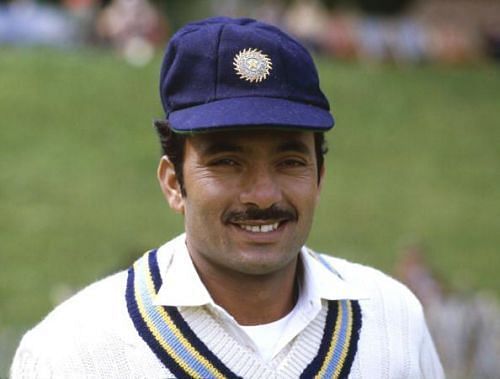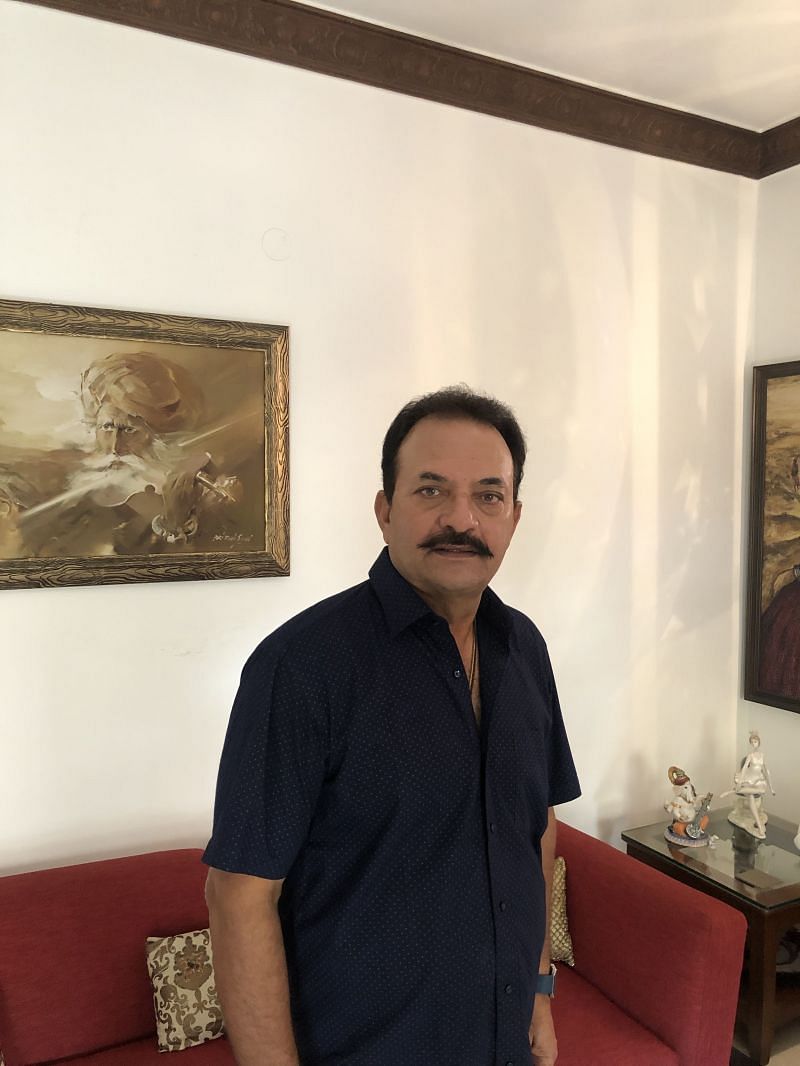
Madan Lal: A cricketer who is more than just the '83 World Cup hero'

I wasn’t born when India won the 1983 Prudential World Cup and the only image I had seen from that victory was of captain Kapil Dev holding the trophy at the Lord’s balcony.
Mind you, I am talking about the 1990s and those were the pre-YouTube days. Then, with the advent of dish TV, a few sports channels started coming up with highlights of the amazing final.
The visual of a smiling Madan Lal stayed with me
Until recently, I had only heard about the tremendous catch taken by Kapil to dismiss Viv Richards, which changed the course of the game. While, the catch was superb, to say the least, but this was the first time I observed the bowler in question. And the visual of a smiling Madan Lal, with his right hand up in celebration, stayed with me.
The Amritsar-born cricketer had taken three of the first four Caribbean wickets to fall in the finals. His figures in the finals read -- three wickets for 31 runs. Overall in that World Cup, he was the joint second-highest wicket-taker with 17 wickets (along with Sri Lanka’s Ashantha de Mel), just one behind teammate Roger Binny.
He also made a few useful contributions with the bat in the tournament, the most important one being in the game against Zimbabwe, which is best remembered for Kapil’s unbeaten 175. Coming in with India tottering at 78 for 7, Madan Lal (who scored 17) was involved in a crucial 62-run eighth-wicket partnership with the skipper.
More to his career than just the World Cup
The 1983 World Cup was beyond doubt amongst his best memories with the Indian team. But there was more to him than that. Making a comeback to the Indian Test team after a gap of four years, he was instrumental in India’s win in the Bombay (now Mumbai) Test in 1981.
Kapil and he took five wickets each to bowl out England for 102 runs in their second innings, thus giving the Indians a victory by 138 runs. Yet again in this match, he featured in two important (for the ninth and tenth wicket) partnerships in the second innings. When he had come in, India were 157 for 8. Although he scored only 17 unbeaten runs, first he had a 46-run partnership with Kapil and then a 24-run one with Dilip Doshi. Given the situation of the match, the value of these runs could be weighed in gold.
His highest Test score of 74 came against arch-rivals Pakistan at Bangalore (now Bengaluru) in 1983 where, along with Roger Binny (83 not out), he had taken India out of trouble from 85 for 6 to a respectable total of 275 in the first innings. With such knocks and a batting average of 22.65 from 39 Tests, he could be relied upon to score a few runs towards the end of the innings.
A force to be reckoned with in domestic cricket
But when it came to domestic cricket, his all-round performance came really to the fore. In Ranji Trophy, he scored 5,270 runs and took 351 wickets. In the 1978-79 Ranji Trophy finals against Karnataka, he took five wickets in the second innings to bowl Delhi to their first title. Later on, he was also the captain of the Delhi team which won the Ranji Trophy in 1985-86 and 1988-89.

About his inconsistency in international cricket, he had no qualms in admitting it when I had met him at his residence last year.
“I always believe, it’s your own fault if you don’t play. My First-Class record is very good. But I always had regret of not doing so well in international cricket. I am not hiding any words. Main chahta tha ki achha karoon, but woh kayi baar nahin ho pata tha (I wanted to do well, but wasn’t able to)”, he had said.
Well, in today’s age it is difficult to find such straightforward people and I was pleasantly surprised at this. Here was a person whose achievement would be of envy for a majority of us, yet he was ready to comment on his shortcomings.
Bishan Singh Bedi, his long-time skipper, told me,
“Madan was a terrific teammate, always gave more than 100% on the field. He was a fabulous game trier.”
I am sure he would have been one.
Post-retirement as well, he has been contributing to Indian cricket in various roles. He has been a selector, a coach, and, more recently, part of the Cricket Advisory Committee (CAC), which chose the new selectors for the Indian cricket team.
Much like in his playing days, he pays a lot of attention to fitness even today. I observed it firsthand as when I had reached his home, he was just finishing his daily exercise routine.
And as he turns 69 years old, I wish him a very happy and healthy year ahead. I am sure he still has a lot to offer to both Delhi and Indian cricket.